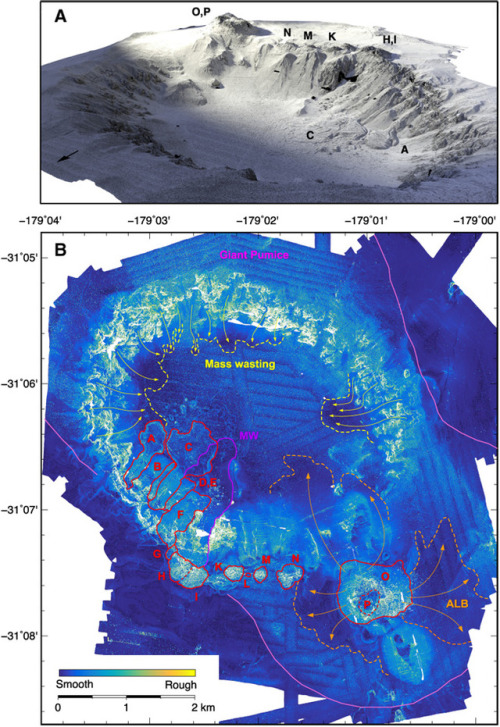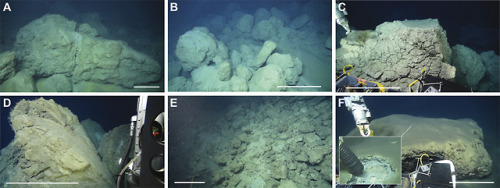There’s a hole in the bottom of the seaIn August of 2012, a large “pumice raft” appeared off the coa
There’s a hole in the bottom of the seaIn August of 2012, a large “pumice raft” appeared off the coast of New Zealand. Pumice is one product of explosive volcanic eruptions; molten rock with high gas content forms bubbles that build up in pressure and rip the rock to fragments. If the bubbles still have gas in them, they can be buoyant enough to bring the rock up to the surface, forming a pumice raft. This pumice raft, seen in the first photo, was erupted from the Harve volcanic seamount northeast of New Zealand.That pumice raft covered an area of about 400 square kilometers before it was dispersed by the waves of the Pacific. That’s about the size of a major city such as Philadelphia. This indicated to scientists that it was likely the largest submarine volcanic explosion on record.In 2015, scientists took a ship to investigate the seafloor site and the results of this volcanic event. They mapped the site of the eruption and found a large caldera, as would be produced by an explosive volcanic eruption on land. The width of this caldera is 4.5 kilometers. The scientists estimated the volume of this eruption and found that it was slightly larger than the 1980 eruption of Mt. St. Helens volcano, but much smaller than the largest eruptions of the last century.Interestingly, it turns out that most of the products of this eruption were pumice. Normally in eruptions such as St. Helens, much of the material that was erupted was blasted apart into fine-grained ash. However, in this eruption about 75% of the material came out as much more coarse-grained pumice. When scientists investigated the seafloor, they found huge pumice chunks – some of them described as the size of houses! This amount of pumice may indicate that these sort of explosive eruptions can have different mechanisms when they take place beneath the pressure of water; rather than splitting into fine-grained ash, the fragmentation in the volcano splits things into larger chunks. This could indicate that the depth where the molten rock is fragmented is different in submarine eruptions.-JBBImage credits:http://advances.sciencemag.org/content/4/1/e1701121 (Original paper)Pumice raft in 2012 press report (AAP)http://bit.ly/19ce4vR -- source link
#geology#volcano#pumice#ocean#new zealand#harve#seamount#caldera#eruption#nature#science#research#volcanomonday


